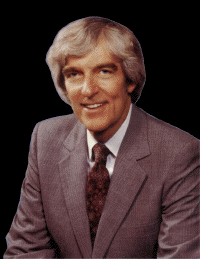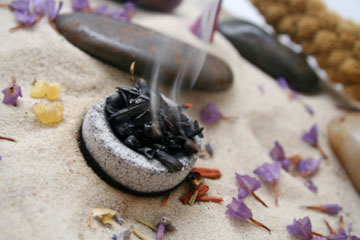Whole milk isn’t bad for you after all
 Dr. Melik: This morning for breakfast he requested something called “wheat germ, organic honey and tiger’s milk.”
Dr. Melik: This morning for breakfast he requested something called “wheat germ, organic honey and tiger’s milk.”
Dr. Aragon: [chuckling] Oh, yes. Those are the charmed substances that some years ago were thought to contain life-preserving properties.
Dr. Melik: You mean there was no deep fat? No steak or cream pies or… hot fudge?
Dr. Aragon: Those were thought to be unhealthy… precisely the opposite of what we now know to be true. Continue reading

 If people stopped smoking, kept fit, slimmed down and had no more than a drink or two a day, cancer death rates would be slashed dramatically, Harvard scientists claim.
If people stopped smoking, kept fit, slimmed down and had no more than a drink or two a day, cancer death rates would be slashed dramatically, Harvard scientists claim. As one reads the headline of this presentation and corresponding column, one is instantly drawn to the proverbial “magic pill.” We want to you to read the following, and take it with a grain of salt. Dr. William Donald Kelley, D.D.S., M.S. cured himself of pancreatic cancer in the early 1960’s. As we recently shared with you on this website, through a
As one reads the headline of this presentation and corresponding column, one is instantly drawn to the proverbial “magic pill.” We want to you to read the following, and take it with a grain of salt. Dr. William Donald Kelley, D.D.S., M.S. cured himself of pancreatic cancer in the early 1960’s. As we recently shared with you on this website, through a 
 Rather than resort to chemotherapy and radiation to shrink an inoperable brain tumor, the father of an eight-month-old baby opted for a non-traditional treatment with cannabis oil. The baby’s physician, Dr. William Courtney, was at first weary about the medicinal benefits of cannabis oil, but has since become a believer in the wake of the child’s remarkable recovery.
Rather than resort to chemotherapy and radiation to shrink an inoperable brain tumor, the father of an eight-month-old baby opted for a non-traditional treatment with cannabis oil. The baby’s physician, Dr. William Courtney, was at first weary about the medicinal benefits of cannabis oil, but has since become a believer in the wake of the child’s remarkable recovery. 
 In 2015, it was estimated that there were approximately 221,200 new cases of lung cancer. Every year, more people die of lung cancer than colon, breast and prostate cancer combined.
In 2015, it was estimated that there were approximately 221,200 new cases of lung cancer. Every year, more people die of lung cancer than colon, breast and prostate cancer combined. By now, it shouldn’t be a secret that there are specific proteins, enzymes and other coding within our bodies that can be activated to stop cancer cells dead in their tracks. Every day, more and more people (including doctors and scientists) are learning about the powers of specific foods and the role they play in our diet to both prevent and fight diseases. When it comes to cancer – which is such a widespread problem, so it naturally garners more attention – there are certain foods and compounds contained within certain foods that are thought to destroy cancer cells, along with having numerous other health benefits.
By now, it shouldn’t be a secret that there are specific proteins, enzymes and other coding within our bodies that can be activated to stop cancer cells dead in their tracks. Every day, more and more people (including doctors and scientists) are learning about the powers of specific foods and the role they play in our diet to both prevent and fight diseases. When it comes to cancer – which is such a widespread problem, so it naturally garners more attention – there are certain foods and compounds contained within certain foods that are thought to destroy cancer cells, along with having numerous other health benefits.  Five years ago, Candice Marie Fox was given 5 years to live due to her thyroid cancer which had spread to her organs. Devastated, she refused chemotherapy and instead started consuming 3 pineapples a day together with lemon, kiwi, grapefruit, bananas, apples and papaya (watch the video for her full protocol). Today she is 31 and very healthy and alive; she managed to defeat fourth stage cancer in 6 months!
Five years ago, Candice Marie Fox was given 5 years to live due to her thyroid cancer which had spread to her organs. Devastated, she refused chemotherapy and instead started consuming 3 pineapples a day together with lemon, kiwi, grapefruit, bananas, apples and papaya (watch the video for her full protocol). Today she is 31 and very healthy and alive; she managed to defeat fourth stage cancer in 6 months! 
 Do most people who get cancer simply have bad luck? Or is cancer something they might be able to prevent? A new study suggests the latter.
Do most people who get cancer simply have bad luck? Or is cancer something they might be able to prevent? A new study suggests the latter. Garlic is known to be an extremely effective vegetable, which can provide an immense number of health benefits. The list of diseases that garlic can kill is long, and includes:
Garlic is known to be an extremely effective vegetable, which can provide an immense number of health benefits. The list of diseases that garlic can kill is long, and includes: Could an ancient aromatic resin really hold the key to stopping the spread of ovarian and other cancers? Scientific research suggests that very well may be the case for frankincense, a plant resin derived from a tree called Boswellia, grown in parts of Arabia and Africa.
Could an ancient aromatic resin really hold the key to stopping the spread of ovarian and other cancers? Scientific research suggests that very well may be the case for frankincense, a plant resin derived from a tree called Boswellia, grown in parts of Arabia and Africa. In many parts of the world, including India, spices are considered sacred and used both as a food and for medicine. Due to their effectiveness, this ideology has now spread into Western medicine. Written by Bharat B. Aggarwal, Healing Spices: How to Use 50 Everyday and Exotic Spices to Boost Health and Beat Disease, details the story of an Indian doctor who has dedicated his career to making scientific breakthroughs involving the use of spices to treat chronic diseases.
In many parts of the world, including India, spices are considered sacred and used both as a food and for medicine. Due to their effectiveness, this ideology has now spread into Western medicine. Written by Bharat B. Aggarwal, Healing Spices: How to Use 50 Everyday and Exotic Spices to Boost Health and Beat Disease, details the story of an Indian doctor who has dedicated his career to making scientific breakthroughs involving the use of spices to treat chronic diseases.  Many people see a lung cancer diagnosis as a death sentence. That’s understandable, since lung cancer kills more than 1.3 million people a year. But when caught early enough, lung cancer can be treatable and, often, curable. According to the National Cancer Institute, the five-year survival rate for lung cancer that hasn’t metastasized, or spread, is slightly more than 50 percent, as compared to nearly 4 percent for lung cancer that’s already spread to other organ systems. So pay close attention to these early — and sometimes surprising — signs of lung cancer, and be assertive about bringing anything suspicious to your doctor’s attention.
Many people see a lung cancer diagnosis as a death sentence. That’s understandable, since lung cancer kills more than 1.3 million people a year. But when caught early enough, lung cancer can be treatable and, often, curable. According to the National Cancer Institute, the five-year survival rate for lung cancer that hasn’t metastasized, or spread, is slightly more than 50 percent, as compared to nearly 4 percent for lung cancer that’s already spread to other organ systems. So pay close attention to these early — and sometimes surprising — signs of lung cancer, and be assertive about bringing anything suspicious to your doctor’s attention.